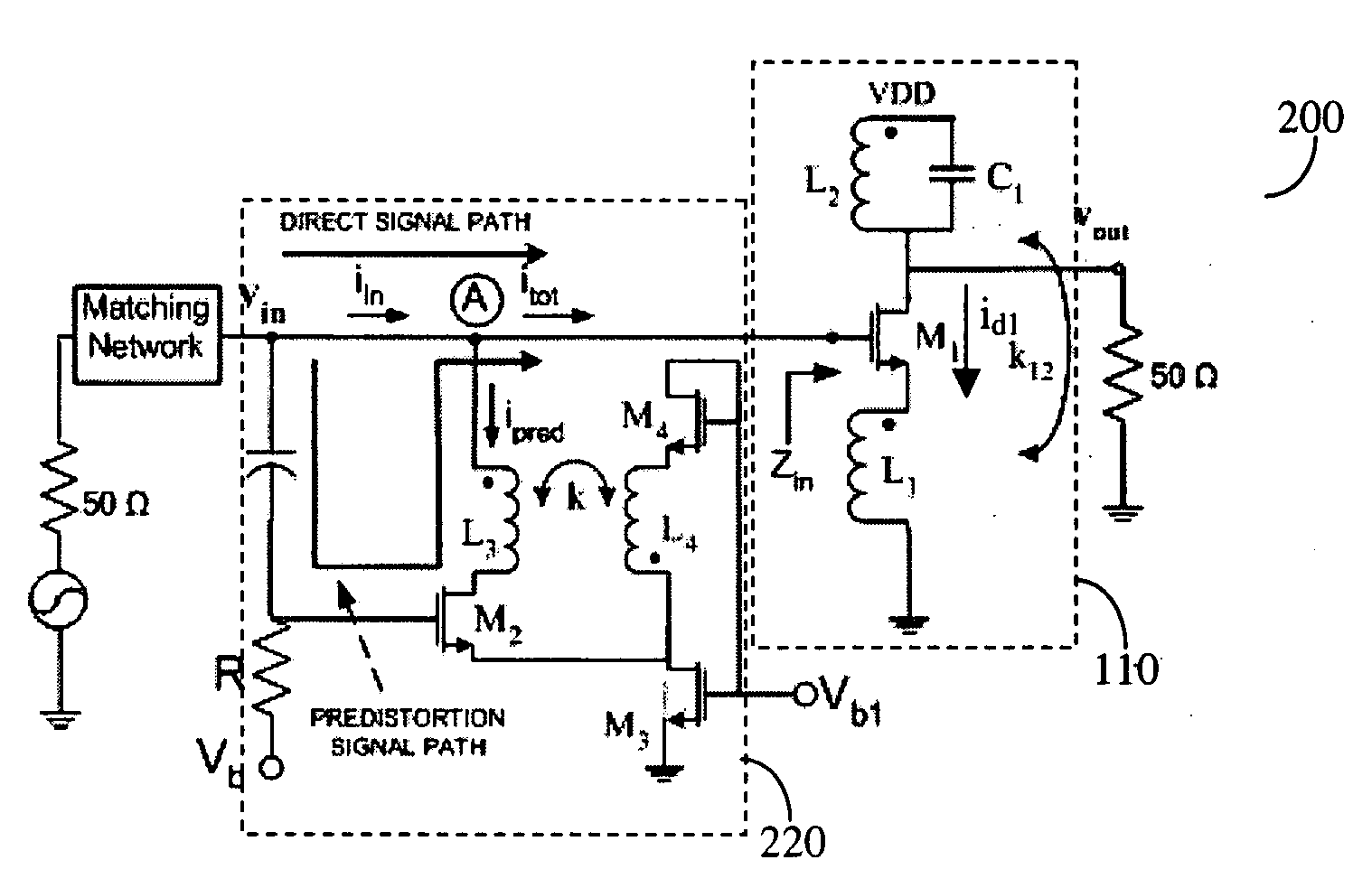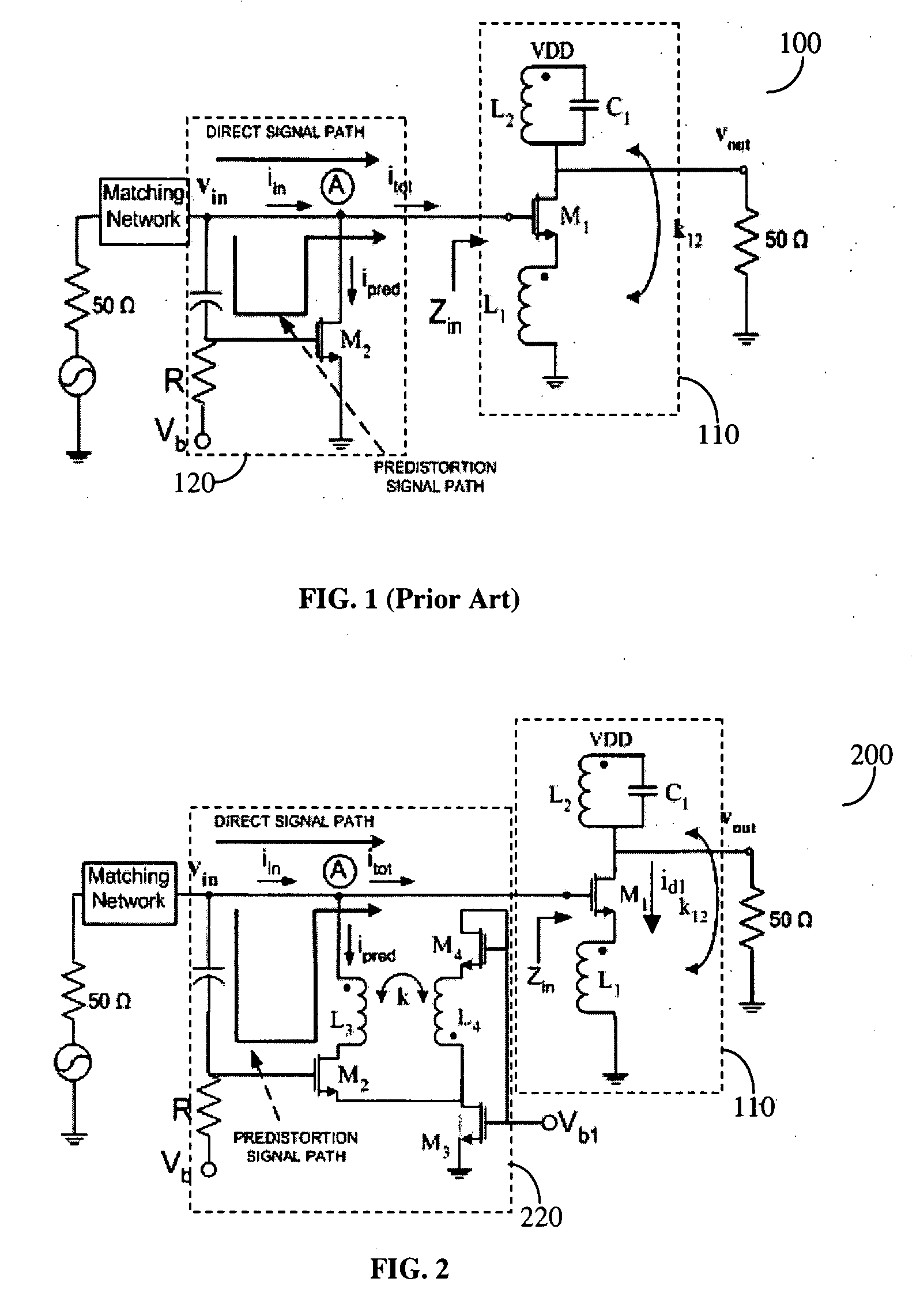Highly linear Low-noise amplifiers
a low-noise amplifier, high-linear technology, applied in amplifiers, amplifiers with semiconductor devices/discharge tubes, amplifiers, etc., can solve the problems of limiting the applicability of topology, limiting the use of lna designs, and the method being limited to operation frequencies below 2 ghz
- Summary
- Abstract
- Description
- Claims
- Application Information
AI Technical Summary
Problems solved by technology
Method used
Image
Examples
Embodiment Construction
[0018]A predistortion method for CMOS Low-Noise-Amplifiers (LNAS) to be used in Broadband Wireless applications is presented. The method is based on the nulling of the third order Intermodulation distortion (IMD3) of the main amplifier by a highly nonlinear predistortion branch. Maximum third order product cancellation is ensured by a transformer feedback method. The technique improves linearity in a wide range of input power without significant gain and Noise Figure (NF) degradation. Simulation results on a 1-V LNA indicate a 10.3 dB improvement in the Input Third-Order Intercept Point (IIP3) with a reduction of only 1 dB and 0.44 dB in amplifier gain and NF, respectively.
[0019]The technique disclosed herein utilizes the 3rd order derivative of the highly non-linear, combined transfer function of a three-transistor network predistortion branch, for partial cancellation of the IMD3 of the main amplifier. In addition, a magnetic feedback method is used to achieve maximum linearity fo...
PUM
 Login to View More
Login to View More Abstract
Description
Claims
Application Information
 Login to View More
Login to View More - R&D
- Intellectual Property
- Life Sciences
- Materials
- Tech Scout
- Unparalleled Data Quality
- Higher Quality Content
- 60% Fewer Hallucinations
Browse by: Latest US Patents, China's latest patents, Technical Efficacy Thesaurus, Application Domain, Technology Topic, Popular Technical Reports.
© 2025 PatSnap. All rights reserved.Legal|Privacy policy|Modern Slavery Act Transparency Statement|Sitemap|About US| Contact US: help@patsnap.com



